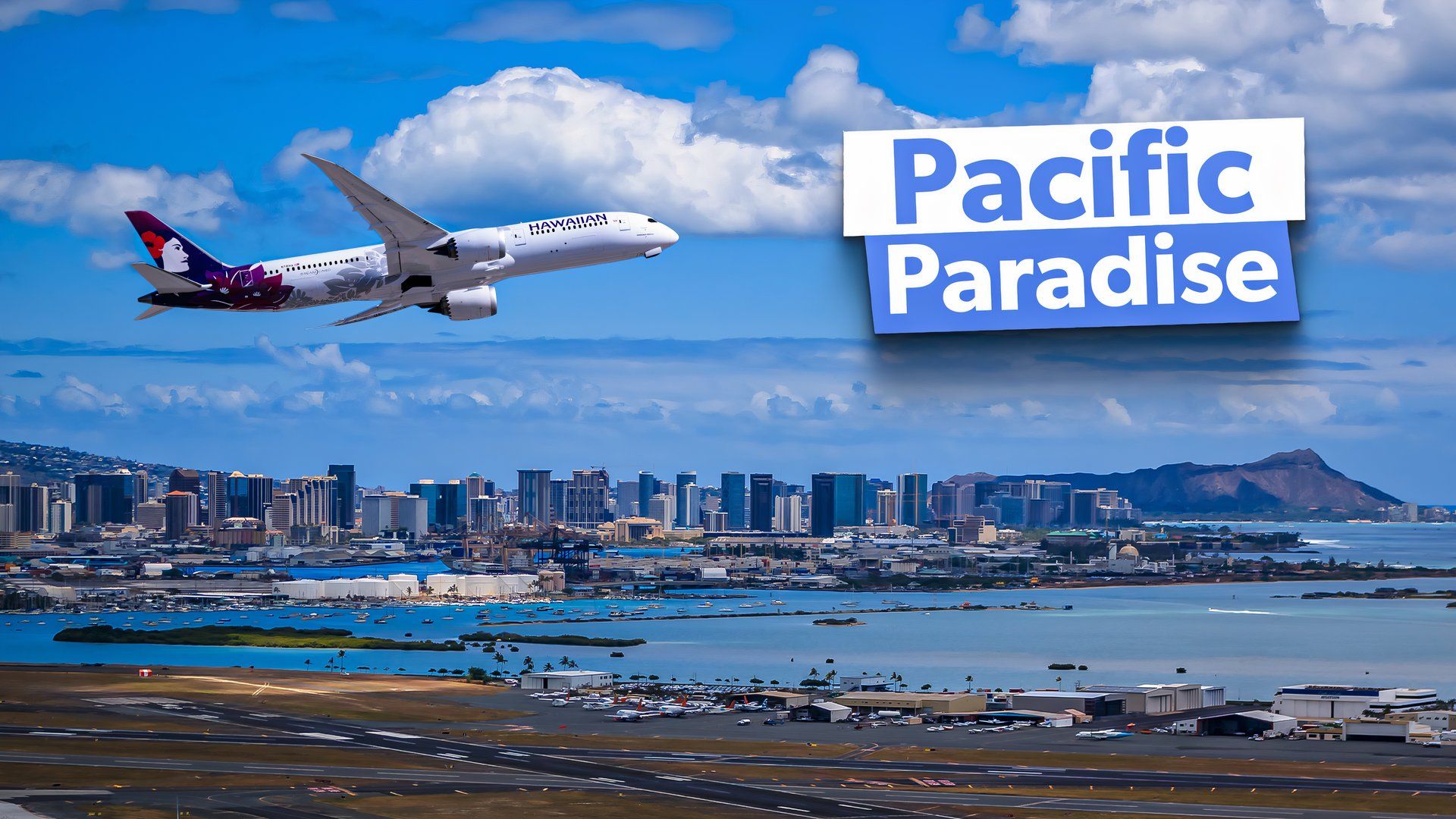The world has plenty of airports in beautiful areas. San Francisco International, Nice Côte d’Azur Airport, and Tokyo Haneda are some airfields that directly abut water and feature fantastic views. One of the most beautiful airports worldwide is Honolulu’s Daniel K. Inouye International.
There are stunning shades of turquoise and sapphire water between the runways and on three sides of the airport. O’ahu’s mountains are visible from many parts of the airport, including the prominent Diamond Head State Monument at the end of Waikiki Beach. These natural features contrast the towering skyline of Honolulu, which is also visible from the airport.
Overall, the views from the airport in Honolulu are some of the most breathtaking (perhaps even the best) anywhere on Earth. This article is dedicated to Honolulu’s airport, the busiest transit hub in Hawaii.
Daniel K. Inouye
Honolulu’s airport is the true gateway to the Hawaiian Islands and, as such, the jumping-off point for many people’s vacation of a lifetime. Serving over 20 million passengers annually, Honolulu’s airport honors the late Senator and Medal of Honor recipient Daniel Inouye.
Inouye served in World War II and was a Senator for his home state of Hawaii from 1963 until he died in 2012. The airport was officially renamed in his honor in 2017. Despite its relative isolation in the middle of the Pacific, Honolulu’s airport is a hub for major US carrier Hawaiian Airlines. Also, it serves as a hub for smaller passenger and cargo airlines like Mokulele and Aloha Air Cargo.
Airport operations
During normal operations and weather conditions, Honolulu operates in an east flow, utilizing runways 8L and 8R. A significant difference between Honolulu and other major airports (such as LAX) is that planes typically land on the indboard runway 8L (closer to the terminals) and depart from the outboard runway 8R.
This allows for extremely quick taxi times after landing, which passengers love after a long trans-oceanic flight to their vacation. However, this isn’t the reason why operates this way. Instead, jet departures are usually required to use 8R for terrain clearance due to the airport’s proximity to downtown and the mountains.
Due to the airport’s proximity to terrain, there aren’t any “straight in” approaches to runways 26L/R. On the odd days that require planes to land to the west, a GPS approach exists to guide pilots to runway 26L (the outboard runway).
This approach requires a high level of GPS integrity and doesn’t align pilots with the runway until 1.3 nautical miles before landing. Landing on runway 26L gives passengers on the plane’s left side amazing views of Koko Head, Diamond Head, downtown, and Waikiki if the weather is clear enough to see it. Landing west usually means the weather is relatively poor, with low clouds, rain, and gusty winds.
The Reef Runway
Runway 8R/26L is known as the “reef runway.” Constructed in 1977, it was the first commercial runway built on the water where no land naturally existed. The runway is built entirely on reclaimed land and is surrounded on all four sides by water.
Taxiing to the reef runway avails the best views from the ground at the Honolulu airport. It’s a long taxi that seemingly takes the plane into the Pacific Ocean. The result is an unobstructed view of downtown and the mountains for the pilots and passengers on the plane’s left side. Those seated on the right side have to settle for stunning views of the turquoise water as the aircraft proceeds down taxiway “Juliet.”
The reef runway is preferred for departures when Honolulu uses its standard easterly flow because it allows for greater terrain clearance and reduced noise for Waikiki. Jets are commonly issued the “Molokai 5” Departure.
This straightforward procedure requires an immediate right after departing 8R that must be completed within two miles of the runway end. In the event of an engine failure, a right turn must be completed no further than 3.5 miles from the Honolulu airport VOR to ensure separation from the terrain and buildings in Waikiki.
Water Runways
Honolulu has another feature that few other airports (let alone major airports) have: water runways. Runways 4W/22W and 8W/26W are affixed with the unusual “W” designation to signify water-only runways. These runways are marked by buoys and are used exclusively by seaplanes.
Honolulu has a plethora of operators that run sightseeing tours and adventures using seaplanes, and Inouye Airport is an operational base for these ventures. The water runways are in the middle of the Keehi Lagoon, which has a beach park on its north end. This is an excellent place for plane spotting!
Open Air Walkways
One more rather unique aspect of the Honolulu airport is the open-air construction of its terminals. Built to take advantage of the sunny, warm, and breezy year-round Hawaiian weather, the walkways that lead from check-in desks to the concourses are open-air breezeways.
This allows passengers and transiting crew to get a feel for the weather before they even step onto the curb for pickup or get one last breath of the Hawaiian air before flying away. Aviation fans can also get strong whiffs of jet fuel and hear the sounds of APUs and engines running on the ramps without layers of glass between them and an up-close experience.
Photo: ARTYOORAN
Most things about Honolulu’s Daniel K. Inouye Airport are unique and special. The most intrinsically special element of the airport is the city and state that it serves. The airport keeps Hawaiians connected to the world and allows visitors from all around the globe to visit the beautiful Hawaiian Islands. The views, scenery, and operational procedures all play a role in making Honolulu a special place. If I had to choose only one place to layover for the rest of my career, I’d pick Honolulu. I don’t think I’d be alone.


